How ABA Assessments Help Identify Strengths and Areas for Growth
November 2, 2025
Unlocking Potential: The Transformative Power of ABA Assessments

Understanding How ABA Evaluations Shape Personalized Support
Applied Behavior Analysis (ABA) assessments are vital tools for understanding children with autism spectrum disorder (ASD), developmental, or intellectual disabilities. These comprehensive evaluations provide insights into a child's unique strengths and challenges, guiding tailored intervention strategies. By systematically examining behavior, skills, and environment, ABA assessments lay the foundation for effective, individualized therapy plans that promote meaningful development and enhance overall quality of life.
What Are ABA Assessments and Their Purpose?
What are assessments in ABA used to identify?
ABA assessments serve as an essential foundation in understanding a child's unique needs. They are used to pinpoint the reasons behind specific behaviors, especially in children with autism spectrum disorder (ASD), developmental delays, or intellectual disabilities.
These evaluations aim to figure out the function of behaviors—what triggers them, when they are most likely to happen, and the environmental context that influences them. By analyzing these factors, professionals can identify behaviors' purpose, whether to gain attention, escape a situation, or satisfy sensory needs.
Collecting detailed data through observations, caregiver interviews, questionnaires, and standardized tools like VB-MAPP or ABLLS-R helps create a comprehensive picture. This process establishes a starting point, known as baseline data, which is vital for setting meaningful goals.
Moreover, assessments allow practitioners to understand a child's strengths, preferences, and areas needing support. Recognizing these aspects enables the development of personalized strategies that leverage existing skills and promote growth.
Overall, ABA assessments guide the formulation of tailored intervention plans, focusing on socially important behaviors such as communication, social interactions, daily living skills, and managing challenging behaviors. Regular follow-up assessments help monitor progress, adjust strategies, and ensure interventions remain relevant and effective.
Assessment Tools and Methods in ABA Evaluation
What standardized assessments are used in ABA evaluations?
In behavioral analysis, standardized assessments provide a structured way to examine a child's skills and developmental levels. Common tools include the Vineland-Ballantyne Modified Assessment of Preschooler’s Language and Communication Skills (VB-MAPP), the Assessment of Basic Language and Learning Skills-Revised (ABLLS-R), the Assessment of Functional Living Skills (AFLS), the Principles of Education, Assessment, and Knowledge (PEAK), and the Interview for the Structured and Standardized Cognitive Assessment (IISCA).
These assessments evaluate various domains such as language, social interaction, daily living skills, and cognitive abilities.
| Assessment Tool | Focus Area | Usage in ABA | Additional Notes |
|---|---|---|---|
| VB-MAPP | Language, social skills | Measures language and social milestones to guide therapy | Focuses on communication and emotional development |
| ABLLS-R | Language, academic skills | Identifies skills and deficits in language and learning | Useful for detailed skill tracking |
| AFLS | Daily living, safety skills | Assesses practical skills necessary for independence | Includes self-care, safety, community skills |
| PEAK | Cognitive, social skills | Promotes advanced language and reasoning | Suitable for higher-level learners |
| IISCA | Behavioral functions | Explores environmental triggers and functions of behavior | Guides intervention strategies |
How do direct observations and data collection support assessments?
Direct observation is a cornerstone method in ABA assessments. Behavior analysts systematically watch and record how a child interacts with their environment, noting frequency, duration, and context of behaviors. These data help identify patterns, triggers, and skills without relying solely on caregiver reports.
Caregivers are often asked to keep logs of behaviors and routines, providing valuable insights into day-to-day functioning. This combination of direct observation and caregiver input enriches the understanding of the child's behaviors in various settings.
How are caregiver and environmental interviews used?
Interviews with parents, teachers, and other caregivers help gather qualitative information about the child's behaviors across different environments. These conversations reveal insights about triggers, preferences, and routines that influence behavior.
Furthermore, environmental assessments evaluate factors such as sensory sensitivities and environmental stimuli that may impact the child's behavior. This holistic approach ensures that assessments consider personal and contextual factors.
What is the role of Functional Behavior Assessments (FBA)?
FBA is a specialized evaluation that identifies the purpose or function behind challenging behaviors. Through interviews, observations, and data analysis, the FBA pinpoints triggers and reinforcers maintaining problem behaviors. This information is crucial for designing effective interventions that replace undesirable behaviors with adaptive coping strategies.
By combining these tools and methods, ABA practitioners create comprehensive profiles that inform personalized therapy plans, ensuring each child's unique needs are met effectively.
How ABA Assessments Identify Strengths and Challenges
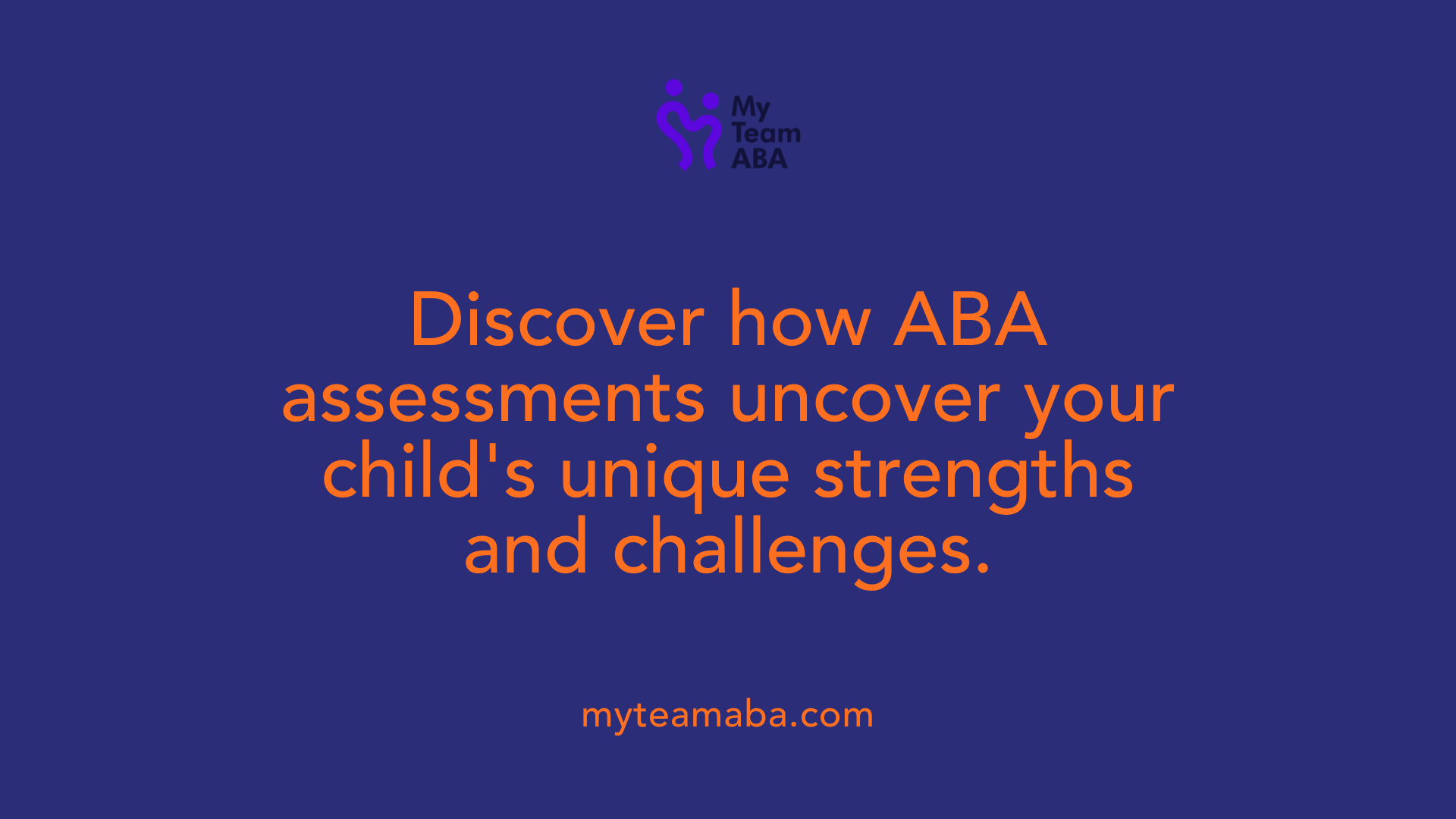
How does applied behavior analysis (ABA) help improve skills for individuals with autism?
Applied behavior analysis (ABA) plays a crucial role in supporting children with autism by focusing on enhancing positive behaviors and reducing problematic ones. This comprehensive approach helps develop vital skills in communication, social interactions, and daily living activities.
During an ABA assessment, therapists gather extensive data through observations, interviews, and standardized tools. This data reveals individual strengths, such as interests, preferences, and existing skills, which can be leveraged to motivate learning and reinforce positive behaviors.
At the same time, assessments pinpoint challenges like difficulty with communication, social skills deficits, and behavioral issues. Identifying these areas allows for targeted intervention strategies tailored to each child's unique needs.
The assessment process involves examining behavioral patterns and environmental influences that may trigger certain behaviors. By understanding these factors, therapists can develop personalized plans that promote adaptive coping mechanisms and functional skills.
Assessment tools like the VB-MAPP, ABLLS-R, and AFLS help quantify language, social, and daily living skills, offering a clear picture of developmental progress.
Using the data from these assessments, therapists craft individualized treatment plans with specific goals. These plans incorporate techniques such as visual supports, communication devices, and behavioral strategies to foster skill acquisition.
Continuous monitoring and ongoing assessments ensure that strategies remain effective and are adjusted based on the child's progress. This dynamic process guarantees that interventions are relevant and meet the child's evolving needs.
| Assessment Area | Focus | How Data Guides Intervention |
|---|---|---|
| Behavioral Patterns | Identifying triggers and routines | Develops targeted behavioral strategies and replacement behaviors |
| Strengths & Interests | Recognizing preferences | Utilizes motivating interests to reinforce learning |
| Challenges | Communication, social skills, behaviors | Addresses specific deficits with tailored goals |
| Environmental Influences | Triggering contexts | Adjusts environment to reduce triggers |
By systematically evaluating these aspects, ABA assessments empower therapists and families to implement effective, personalized strategies that promote meaningful progress in children with autism.
Creating Personalized Intervention Strategies
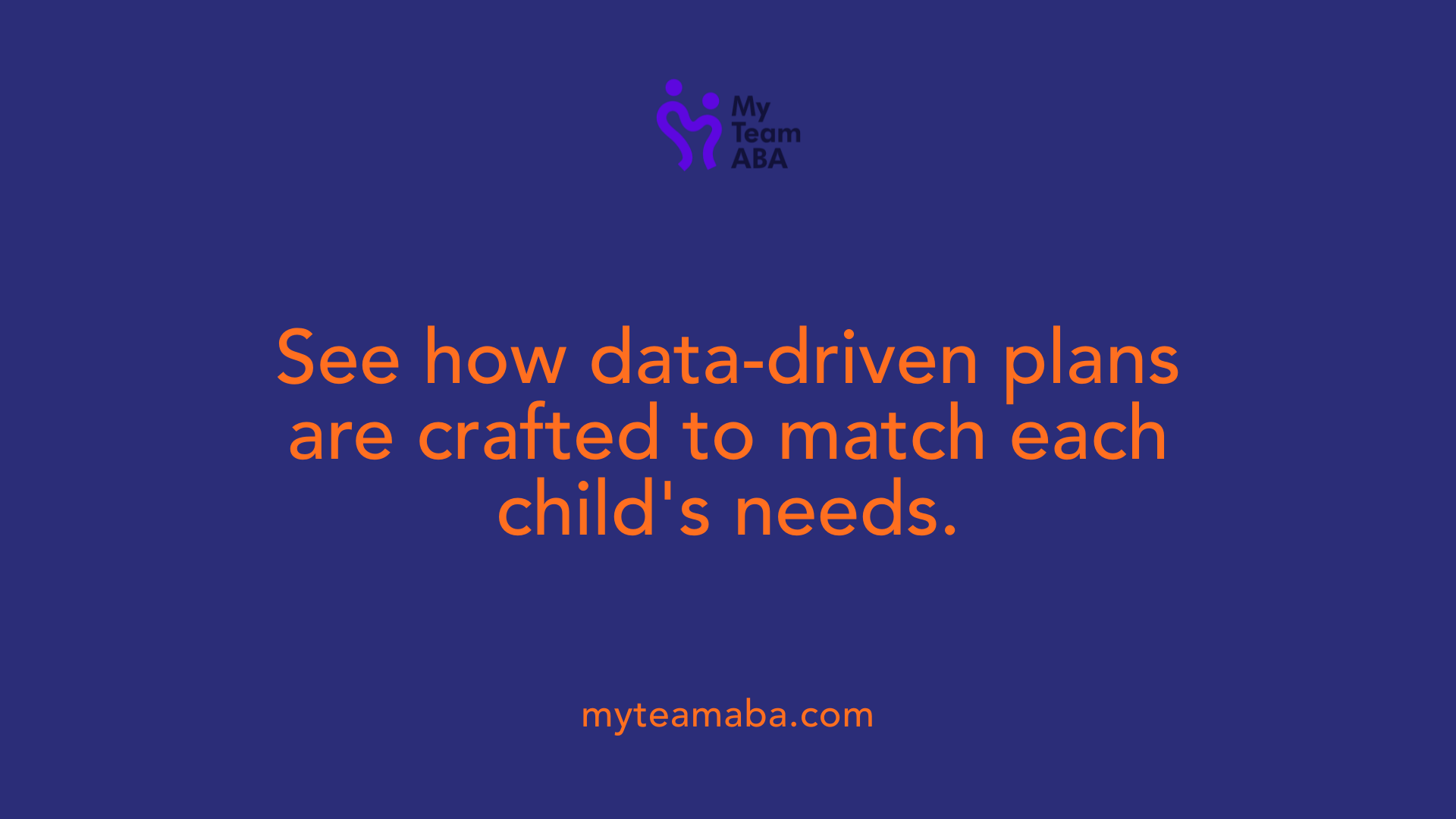 Utilizing assessment results for treatment planning
Utilizing assessment results for treatment planning
The first step in crafting effective ABA intervention strategies involves a detailed analysis of the assessment data collected during the initial and ongoing evaluations. These assessments include standardized tools like VB-MAPP, AFLS, PEAK, and IISCA, as well as functional behavior assessments (FBAs) and direct observations.
By examining the child's strengths, interests, and behaviors, therapists can develop a clear picture of what skills need to be developed and what behaviors may require intervention. For example, if an assessment reveals delays in language skills, the treatment plan can prioritize communication strategies that leverage the child's preferred modes of expression.
Setting realistic and customized goals
Goal-setting is fundamental in ABA therapy. After gathering assessment data, practitioners collaborate with families to establish achievable, measurable objectives tailored to the child's specific needs. These goals might focus on improving social interactions, increasing daily living skills, or reducing problematic behaviors.
Because each child's profile is unique, goals are customized to reflect individual capabilities and interests, ensuring greater motivation and engagement in therapy. For example, a child with a fascination for animals might learn to request their favorite animals using visual aids or sign language.
Incorporating strengths and preferences into therapy plans
Harnessing a child's strengths and preferences can significantly enhance the effectiveness of interventions. If assessments indicate that a child excels in visual learning, therapy can incorporate visual schedules, picture exchange communication systems (PECS), or other visual aids.
Additionally, understanding a child's preferred activities or interests enables clinicians to embed these into therapy sessions, making learning more engaging. When children participate in activities they enjoy, they are more likely to be motivated and make meaningful progress.
Adjusting interventions based on ongoing assessment data
As therapy progresses, continuous assessments provide crucial feedback. Regular data collection helps identify whether strategies are effective or need modification. For example, if a child's communication skills improve but problem behaviors persist, intervention plans can be adjusted to address triggers and teach replacement behaviors.
Tracking progress allows clinicians to set new, higher-level goals and refine techniques, ensuring that therapy remains relevant and effective. This dynamic approach promotes sustained skill development and behavior change.
| Aspect | Approach | Examples |
|---|---|---|
| Data-Driven Planning | Use initial assessment data to develop personalized plans | Language delays addressed with AAC tools |
| Goal Setting | Set tailored, measurable goals based on strengths and weaknesses | Improving social play by age-appropriate targets |
| Incorporating Child’s Interests | Leverage preferences and strengths for increased motivation | Using preferred toys or topics in therapy |
| Monitoring and Adjustment | Regularly review progress and modify strategies accordingly | Changing reinforcement strategies based on observed behavior |
This ongoing, flexible approach ensures that interventions are continually aligned with the child’s evolving needs and capabilities, fostering meaningful development.
The Process of Conducting ABA Assessments
How do assessments in ABA help identify behavior?
Assessments in ABA are vital for understanding why certain behaviors occur. They help identify the functions or purposes behind a child's actions by examining environmental influences, triggers, and context. This understanding allows therapists and caregivers to develop strategies that address the root causes and improve skills.
Preparation by caregivers and professionals
Before an assessment begins, parents and professionals gather comprehensive information. Caregivers may collect developmental, medical, and behavioral histories, noting any patterns or concerns. Keeping logs of behaviors and providing detailed background helps ensure the assessment is thorough.
Step-by-step assessment procedures
The assessment process involves several key steps:
- Initial Interviews — Caregiver interviews provide insights into the child's daily routines, behavior challenges, and strengths.
- Direct Observation — The BCBA observes the child in natural settings to record behavior patterns.
- Standardized Assessments — Tools like VB-MAPP, ABLLS-R, AFLS, PEAK, and IISCA are used to evaluate different skill areas, including communication, social interaction, daily living, and cognitive abilities.
- Functional Behavior Assessment (FBA) — This identifies triggers for problem behaviors and the functions they serve.
Data collection and analysis methods
Data collection is systematic and involves recording behaviors during observations and tasks. Common methods include frequency counts, duration measurements, and ABC (Antecedent-Behavior-Consequence) charts.
The collected data is then analyzed to draw conclusions about behavior functions, skill deficits, and environmental factors. This analysis forms the foundation for personalized intervention plans.
Reviewing findings with caregivers and team members
Once data analysis is complete, the BCBA reviews the findings with caregivers and the therapy team. They discuss the child's strengths, challenges, and specific behavior triggers.
Together, they set realistic goals addressing communication, social skills, adaptive skills, and behavior management. This collaborative review ensures everyone understands the child's needs and is aligned on subsequent therapy steps.
The Role of Caregivers and Professionals in the Assessment Process
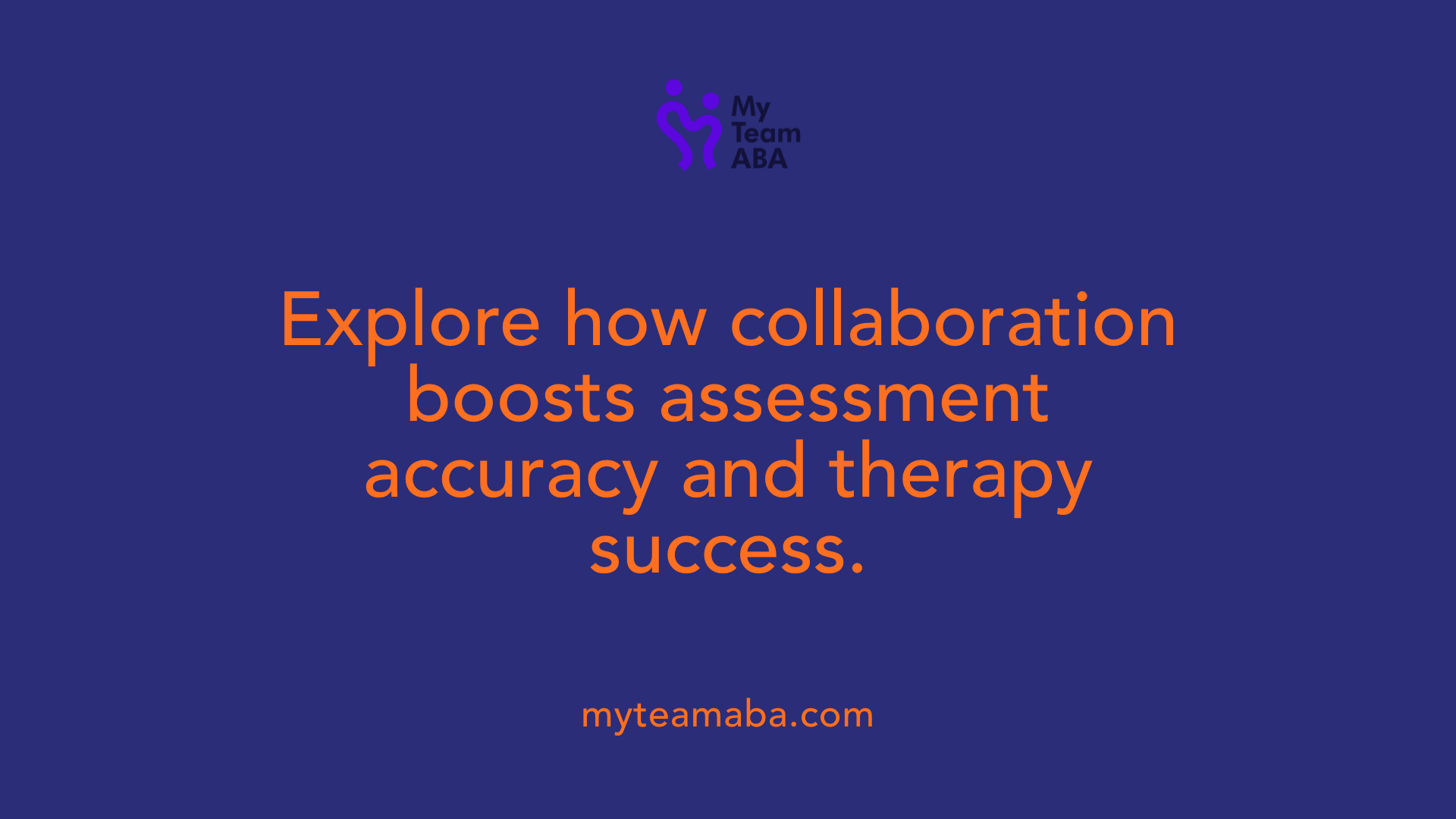
Why are assessments important in ABA therapy?
Assessments are a fundamental step in ABA therapy because they help identify a child's strengths, interests, and challenges. This detailed evaluation guides the development of personalized treatment plans tailored specifically to each child's needs. Through systematic observation, interviews, and standardized tools, therapists understand behaviors, communication abilities, social skills, and sensitivities.
Furthermore, assessments include tools like the VB-MAPP, ABLLS-R, and FBA, which help pinpoint specific areas for growth. Ongoing assessments track progress over time, ensuring interventions stay effective and relevant. They also help in setting realistic goals related to communication, social skills, daily living, and behavior management. Overall, thorough assessments increase the efficiency and success of ABA therapy, fostering meaningful and lasting change.
Caregiver involvement and preparation
Caregivers play a pivotal role in the assessment process. Their involvement begins with gathering detailed information about the child's developmental and medical history. Keeping logs of behaviors, triggers, and routines provides valuable insights. Caregivers can also prepare by noting specific concerns and observing daily behaviors, which helps inform the assessment.
During the assessment, caregivers often participate in interviews and observations, sharing critical details about the child's environment and interactions. Their input ensures the team thoroughly understands the child's needs and preferences. Active participation also boosts caregiver confidence and commitment to the therapy process.
Collaboration between therapists and families
Effective assessment involves a collaborative approach between BCBAs, therapists, and family members. Communication is essential for sharing findings and discussing goals. Therapists review assessment results with caregivers, explaining how the data influences intervention planning.
This collaboration helps develop treatment plans that align with the family's routines and values, ensuring strategies are practical and sustainable. Regular meetings and updates keep everyone informed about progress and adjustments needed to support the child's development.
Data sharing and communication
Sharp communication channels are vital in the assessment process. Sharing assessment data allows everyone involved to understand the child's current skills, challenges, and the environmental factors impacting behavior. Clear documentation and reporting facilitate ongoing evaluation and provide a basis for modifying strategies.
Technologies like progress tracking software or shared reports enhance transparency and enable real-time updates. Open communication also addresses any concerns from caregivers, fostering a supportive environment that promotes consistency across settings.
Training caregivers to implement strategies
An essential aspect of the assessment process is empowering caregivers through training. Once personalized intervention plans are developed, caregivers are equipped with strategies to support their child's learning at home and in daily routines.
Training may include teaching visual supports, communication techniques, or behavior management strategies. Hands-on guidance ensures caregivers can confidently implement interventions, which increases their effectiveness. Continuous support and education help families adapt strategies over time, reinforcing progress and encouraging generalization of skills across environments.
Monitoring Progress and Adjusting Interventions
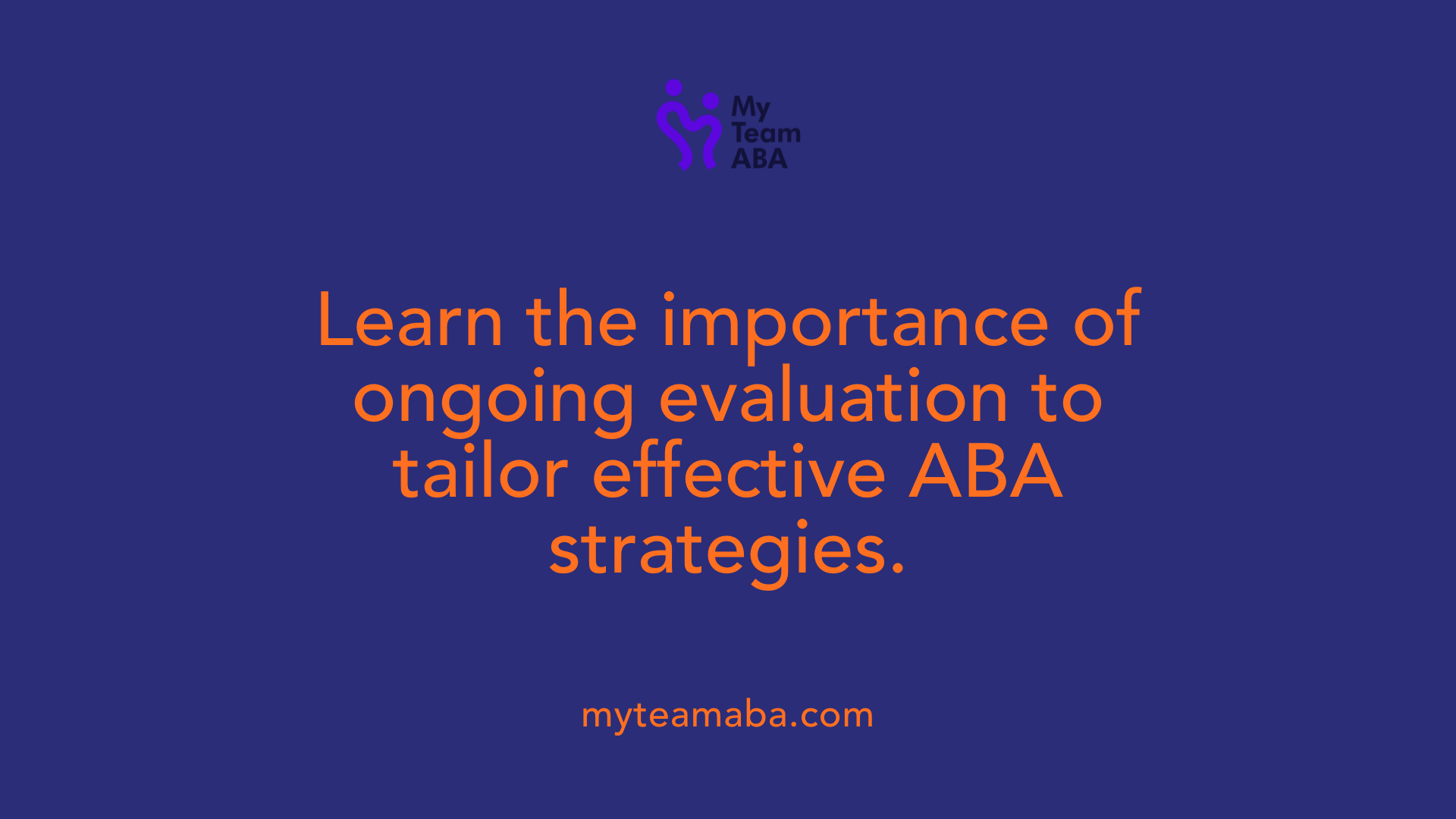 Ongoing assessment plays a vital role in the success of ABA therapy. Regularly evaluating a child's progress ensures that interventions remain effective and aligned with their evolving needs. Through continuous data collection, therapists can observe changes in behavior, skill acquisition, and emotional responses over time.
Ongoing assessment plays a vital role in the success of ABA therapy. Regularly evaluating a child's progress ensures that interventions remain effective and aligned with their evolving needs. Through continuous data collection, therapists can observe changes in behavior, skill acquisition, and emotional responses over time.
Using data to track progress allows for objective measurement of a child's development. For example, therapists might record frequency and intensity of problem behaviors or note improvements in communication and social skills. This data-driven approach helps identify which strategies are working and which require adjustment.
Adapting strategies based on assessment outcomes is crucial for maximizing therapy benefits. If data indicates limited progress or the emergence of new challenges, treatment plans can be modified. This may involve increasing or decreasing therapy hours, introducing new skill-building activities, or targeting different behaviors. Flexibility ensures that therapy remains personalized and effective.
Ensuring continuous improvement in therapy involves integrating insights gained from assessments and data analysis. By consistently reviewing progress and making evidence-based changes, therapists can better support a child's growth. This iterative process fosters a responsive and dynamic approach to ABA, ultimately leading to more meaningful and sustainable outcomes.
Conclusion: The Impact of ABA Assessments on Children's Development
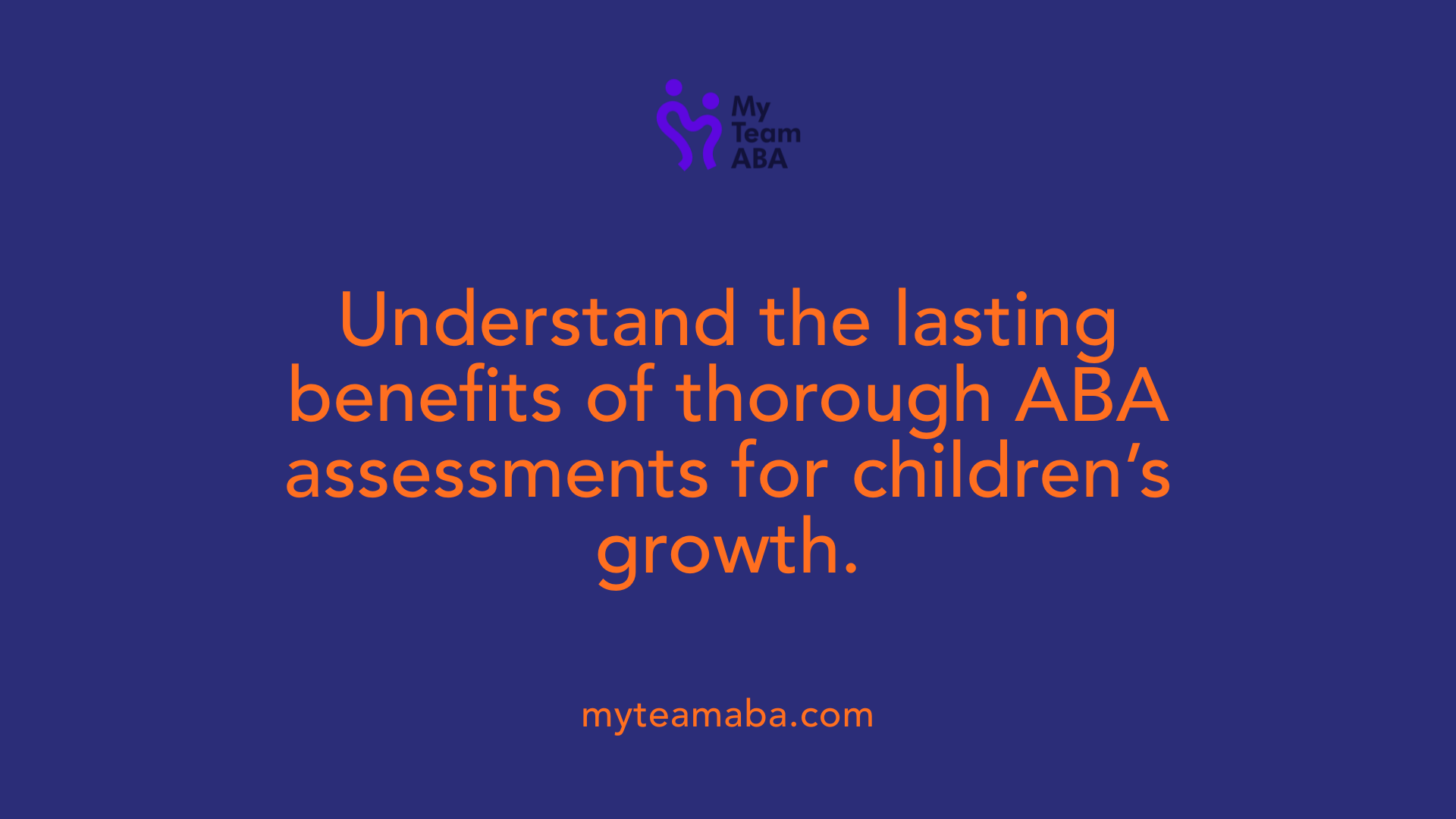 ABA assessments serve as the foundation for effective therapy plans tailored to each child's unique needs. These evaluations, conducted by certified professionals, provide detailed insights into a child's strengths, challenges, and behaviors through various tools like standardized assessments, observations, and caregiver interviews. This comprehensive approach allows for the creation of targeted strategies that promote communication skills, social interaction, and daily living abilities.
ABA assessments serve as the foundation for effective therapy plans tailored to each child's unique needs. These evaluations, conducted by certified professionals, provide detailed insights into a child's strengths, challenges, and behaviors through various tools like standardized assessments, observations, and caregiver interviews. This comprehensive approach allows for the creation of targeted strategies that promote communication skills, social interaction, and daily living abilities.
A personalized, data-driven methodology is essential in ABA therapy. By establishing baseline measurements and monitoring progress over time, therapists can adapt interventions to ensure continuous growth and achievement of goals. Regular reassessments not only refine strategies but also motivate both children and parents by highlighting progress and addressing emerging needs.
Involving families throughout the assessment process enhances understanding, enabling them to better support their child's development. Sharing assessment findings and strategies empowers caregivers, fostering collaboration and confidence in managing daily challenges.
Ultimately, ongoing assessment is crucial for sustaining progress. It ensures interventions remain relevant, adaptable, and effective, helping children develop vital skills that support their long-term success in social, communication, and daily living domains.
Empowering Growth Through Informed ABA Strategies
In summary, ABA assessments are fundamental in identifying both strengths and areas for growth in children with autism and other developmental challenges. They provide a data-driven foundation that guides personalized interventions, ensuring that therapy is tailored to each child's unique needs. By involving caregivers and professionals in the assessment process, strategies become more effective and family-centered. Continuous monitoring and adjustments based on assessment outcomes help maintain progress and promote lifelong development. Ultimately, these evaluations empower families, foster confidence, and serve as a crucial tool in unlocking each child's potential, paving the way for meaningful and sustainable growth.
References
- ABA Assessments: The First Step for ABA Therapy - Cortica
- ABA Assessment: What is It? | Circle ABA - The Autism Impact Circle
- What to Expect in the Initial ABA Assessment - Move Up ABA
- Why An ABA Therapy Assessment is a Crucial Step
- 4 Types of Behavioral ABA Assessments in Autism
- Understanding the Benefits of ABA Assessment for Children With ...
- Applied Behavior Analysis (ABA) Therapy - All You Need to Know
- SKILL ASSESSMENTS - ABA Autism Therapy and Treatment
